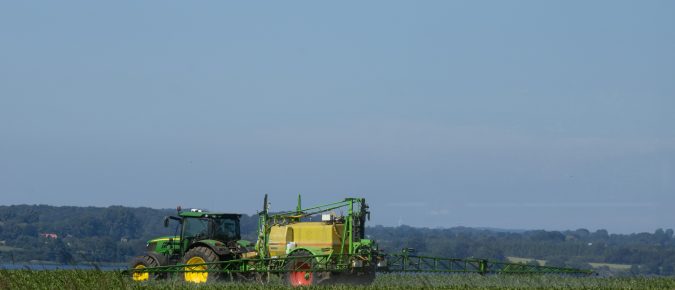Articles
The Cutting Edge Podcast Episode #37: Chippewa Valley Bean
Chippewa Valley Bean Vice President Charles Wachsmuth talks about the history of the family business, current markets, and what makes them unique in the world of kidney beans. Located in Menomonie, WI, Chippewa Valley Bean is the world’s largest processor of kidney beans, exports to 35 countries worldwide, and has tripled in size over the […]
Emerging Crops Lunch and Learn: Hops
UW-Madison Extension Educators Jerry Clarke (Chippewa County) and Carl Duley (Buffalo County) talk about the latest hops research in Wisconsin.
Emerging Crops Lunch and Learn: Hemp
Phillip Alberti and Dr. Derrick Grunwald from the Shelby Ellison lab at UW Madison talk about the latest hemp research.
Field Notes Episode 6: Frost Seeding
March is mud month in Wisconsin. While this season may not be particularly pretty on the eyes, the freeze and thaw of the soil presents farmers with an opportunity to seed small-seeded plants like clovers into a fall-established wheat crop.
Emerging Crops Lunch and Learn: Kernza
Priscila Pinto, postdoc researcher in the Picasso lab at UW-Madison, and Nicole Tautges, Agroecologist at Michael Fields Agricultural Institute in East Troy, WI, share their updates on Kernza perennial grain.
Emerging Crops Lunch and Learn: Hazelnuts
Jason Fischbach, Scott Brainard and Tressa Peskar talk about their research and the latest commercialization efforts with hazelnuts.
Understanding adjuvants used with agriculture chemicals
An adjuvant is a supplemental substance added to a spray mixture to enhance the performance and/or physical properties of the desired chemical. Using the correct adjuvant can have benefits such as reducing or eliminating spray application problems, which would improve the overall efficacy of the applied formulation.
Focus on corn silage
The first Focus on Forage session of 2023, Focus on Corn Silage, features Dr. Joe Lauer, UW Corn Agronomist, Dr. Damon Smith, UW Plant Pathology, and Kevin Jarek, UW-Madison, Division of Extension Crops/Soils Educator.
Field Notes Episode 5: Digital Agriculture
Data is the currency of the future. What does this look like for farmers? We sit down with Drs. Emily Bick, Extension-funded field and forage crop entomologist with University of Wisconsin-Madison, and Jim Eckberg, a scientist with General Mills, to find out. We talk on how sensors and imaging can help build back biodiversity and soils as well as how industry is working to spur the transition along.
Bale grazing: A winter feeding strategy
Many grazing operations across Wisconsin may look similar during the growing season, but what differentiates them is winter. Graziers employ a variety of winter feeding strategies. For those who choose to keep their livestock outdoors year-round, bale grazing is a common approach. In bale grazing, bales are placed on pasture, often pre-set in a grid pattern prior to winter.














